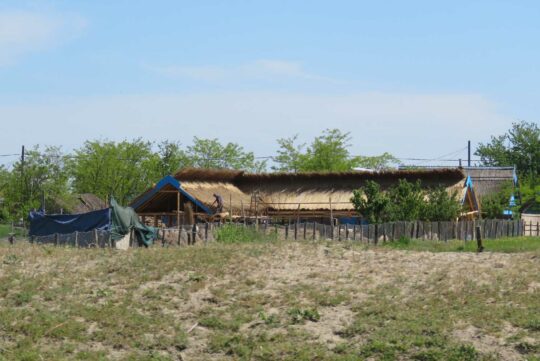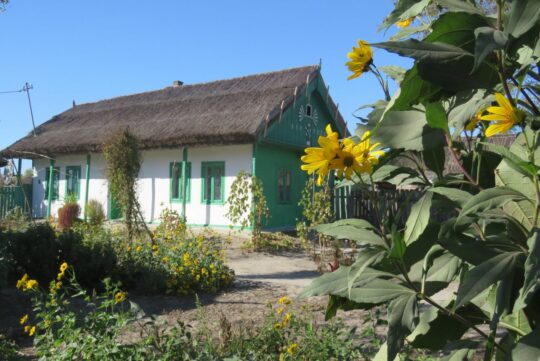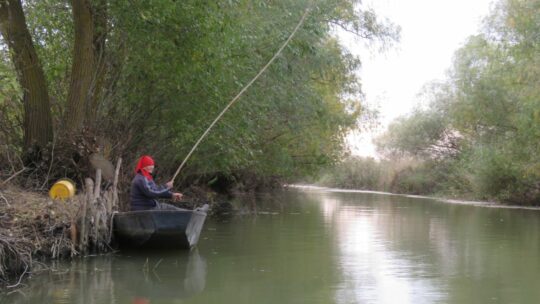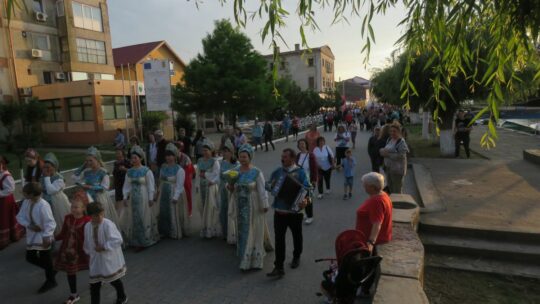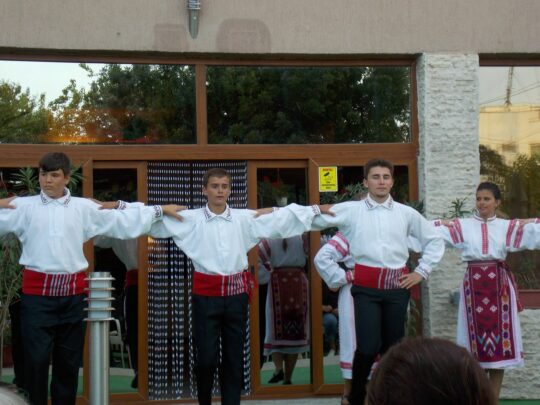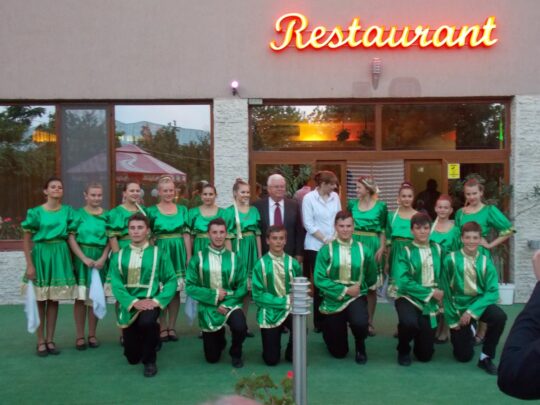
Life in traditional style
Farming and animal husbandry on beams
Another source of income, developed in the years after 1990, is represented by agritourism. Many locals, sensing the tourist potential of the Delta, developed their own business, lodging tourists and offering them more and more services, quickly adapting to market demand.
The covering of houses
With only one tool, the awl, and with a lot of skill, a craftsman from the Letea area manages to preserve one of the most beautiful occupations in the Danube Delta: making reed roofs. Thus, he carries on the tradition of his ancestors.
The traditional crafts of the Danube Delta are on the verge of extinction.
The craftsmen who know how to carry on the way of life of the ancestors can be counted on the fingers of one hand. Letea, considered to be the best preserved village in the Danube Delta, has remained so.
A thatched roof is still equal parts old and new, traditional and modern. Although reed is a material that seems handy and has been used since ancient times to cover houses, now it is not exactly a cheap material, used mainly by owners of old houses or by those who want a house with a special aspect.
The dance of the ethnic groups
The cultural and historical potential, the elements of ethnography specific to each cohabiting ethnic group (Greeks, Lipovian Russians, Ukrainians), an appearance and socio-economic life specific to Sulina, constitute yet another argument in favor of protecting this unique land in Romania and even in Europe. Every Saturday evening, on the city’s seafront, the Hellenic community of Sulina delights us with traditional Greek dances, the members of the community being involved from a young age to the mature years in these street events that have already become a tradition.
In June of each year, the Festival of Minorities takes place in Sulina, an event that brings together most of the ethnic groups in the Danube Delta, each ethnic group highlighting the traditions inherited from their ancestors.
Forgotten traditions
Signs of concern regarding the fate of traditional crafts in the Delta, and therefore also in Sulina, have been signaled by ethnologists since the end of the 19th century and the beginning of the 20th century. However, crafts continue to exist, being an ever-present phenomenon in the life of mankind. It is natural that, with the changing requirements and needs of man, from one era to another, the craftsman adapted and created or acquired new tools for new objects. If, in the past, the craftsman managed to keep up with the transformations in the society in which he lived, nowadays, due to the speed with which the transformations take place, he risks not understanding and being able to adapt to the techniques and requirements of modern life. So, in the area of the city of Sulina, we recall the construction of traditional houses, the weaving of nets, the weaving of baskets and rush mats.



